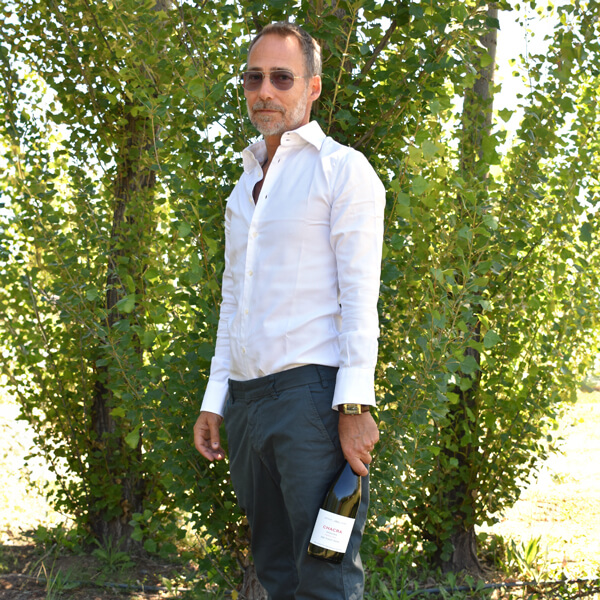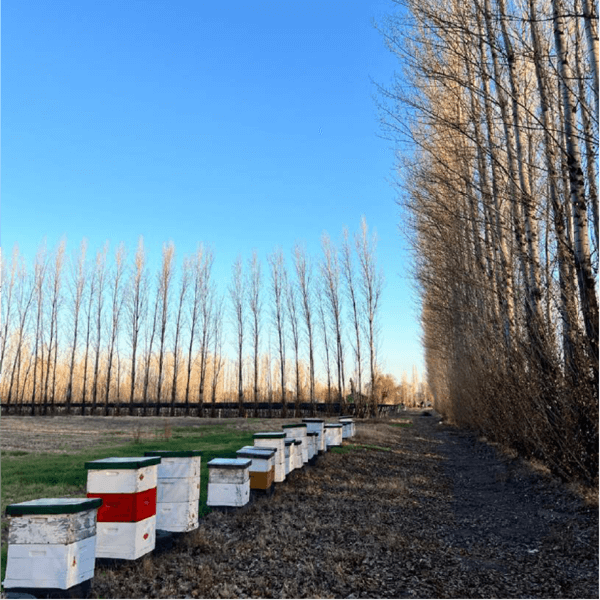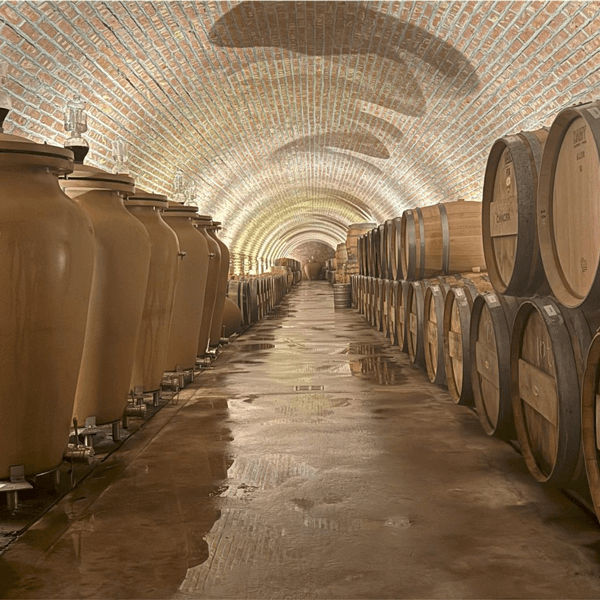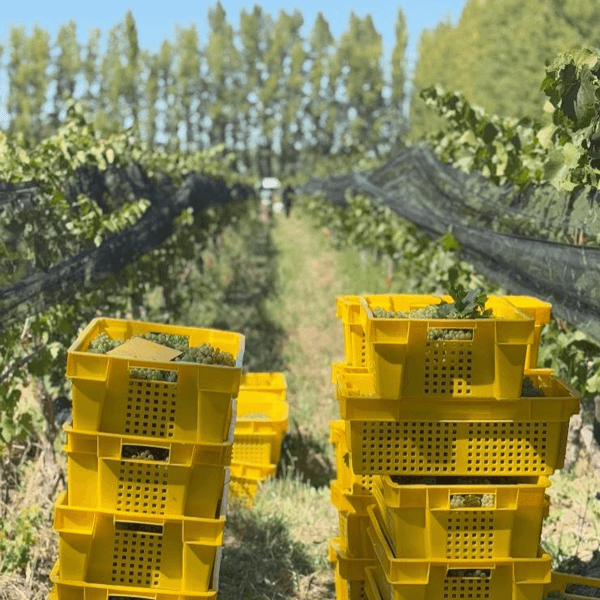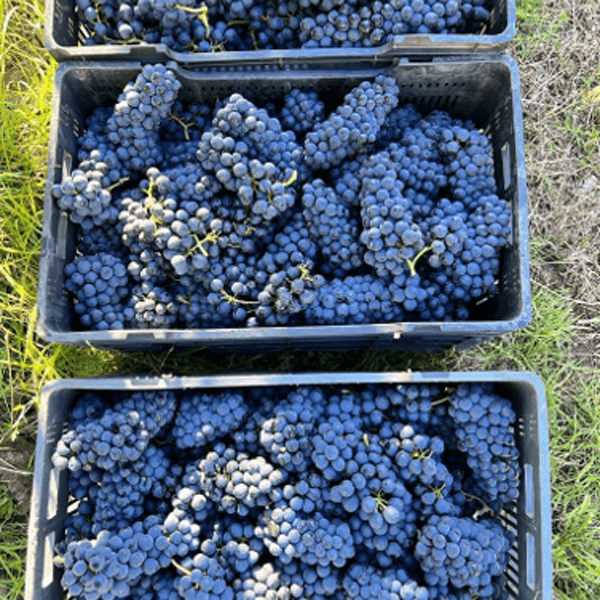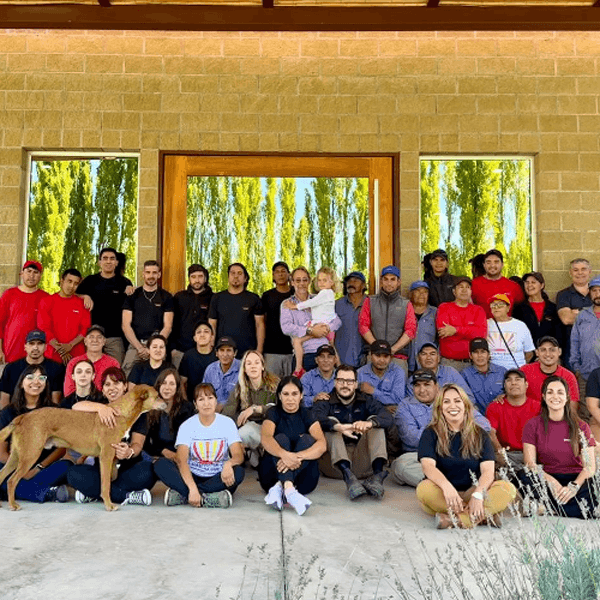
2024 BARDA PINOT NOIR Bodega Chacra
Rio Negro Patagonia Argentina
12%
Red
Pinot Noir.
Bio-dynamic, Vegetarian, Vegan, Certified Organic
Perfumed, with subtle cherry, cranberry and strawberry aromas and a hint of peaches. Medium-bodied with brightness and freshness. Vivid, lively, crunchy and fresh. Always excellent and super drinkable. Drink or hold.
James Suckling, www.jamessuckling.com
2021 SIN AZUFRE Pinot Noir Bodega Chacra
Rio Negro Patagonia Argentina
12%
Red
Pinot Noir.
Bio-dynamic, Vegetarian, Vegan, Low-alcohol, Certified Organic
Made without added sulphur (azufre) – although the back label still says 'Contains sulfites'. Organic and biodynamic grapes from vines planted in 1955. Fermented in concrete with indigenous yeasts for 15 days and 60% mat...(read more)
Jancis Robinson OBE MW
2022 LUNITA Pinot Noir Bodega Chacra
Rio Negro Patagonia Argentina
12%
Red
Pinot Noir.
Bio-dynamic, Vegetarian, Vegan, Certified Organic
The 2022 Pinot Noir Lunita hails from Mainqué in Río Negro. Fermented with 50% whole clusters, this ruby-hued Pinot unfolds with notes of strawberry yogurt, cherry, chamomile and mustard seed. Dry and lean,...(read more)
Joaquin Hidalgo, Vinous.com
2022 ROKA MALBEC Bodega Chacra
Rio Negro Patagonia Argentina
12.5%
Red
Malbec.
Bio-dynamic, Vegetarian, Vegan, Certified Organic
A very vibrant malbec showing minimal extraction, if any at all. Tangy blueberries and red fruit with bright acidity and soft tannins. The fresh, fruit finish highlights purity. This is all about drinkability and freshne...(read more)
Zekun Shuai www.jamessuckling.com
2022 CHACRA Cincuenta y Cinco '55' Pinot Noir Bodega Chacra
Rio Negro Patagonia Argentina
12.0%
Red
Pinot Noir.
Bio-dynamic, Vegetarian, Vegan, Certified Organic
Named after the year (1955) when the vineyard was planted, this wine was aged in used barrels, amphorae and concrete. Rather than jumping from the glass it dances in it, weaving cherry with violets, rose petals and ripe...(read more)
Inés Salpico, Decanter
2024 CHACRA TROUSSEAU Bodega Chacra
Rio Negro Patagonia Argentina
12%
Red
Trousseau.
Bio-dynamic, Vegetarian, Vegan, Certified Organic
%Alc. 12%, ph 3.4, Total acidity 5.4 g/l. Ageing 100% in handmade amphoras for 8 month
Winemaker's notes
2022 MAINQUÉ Chardonnay Bodega Chacra
Rio Negro Patagonia Argentina
13%
White
Chardonnay.
Bio-dynamic, Vegetarian, Vegan, Certified Organic
Arguably the finest vintage of Mainqué to date. Broad yet focused, the 2022 offers a honeyed texture cut by a spine of acidity. A hint of gunflint on the nose gives way to flavours of white peach, camomile and sea...(read more)
Amanda Barnes, Decanter
2023 MAINQUÉ Chardonnay Bodega Chacra
Rio Negro Patagonia Argentina
13%
White
Chardonnay.
Bio-dynamic, Vegetarian, Vegan, Certified Organic
Apple, brioche, flint, pear and slate aromas with hints of apple tart follow through to a full body with gorgeous richness and depth, yet it grows on the palate. Very vertical and goes deep. Best ever. Drink or hold.
James Suckling, www.jamessuckling.com
2022 CHACRA CHARDONNAY Bodega Chacra
Rio Negro Patagonia Argentina
13%
White
Chardonnay.
Bio-dynamic, Vegetarian, Vegan, Certified Organic
Although initially shy, the 2022 unfurls with delicate layers of seashells, Meyer lemon and apple pie. Its acidity is taut as a tightrope, yet enveloped in flesh and quiet power. Complex, crystalline and my favourite vin...(read more)
Amanda Barnes, Decanter
2023 CHACRA TREINTA Y DOS '32' SIN AZUFRE PINOT NOIR Bodega Chacra
Rio Negro Patagonia Argentina
12%
Red
Pinot Noir.
Certified Organic

2023 CHACRA CHARDONNAY Bodega Chacra
Rio Negro Patagonia Argentina
13%
White
Chardonnay.
Bio-dynamic, Vegetarian, Vegan, Certified Organic
The 2023 release shows Jean-Marc Roulot fully in his stride: elegant and linear, with a racy minerality and top notes of lemon curd and spring blossom. The crop was small due to frost – but therein lies its intensity and...(read more)
Amanda Barnes, Decanter
2024 BARDA PINOT NOIR Bodega Chacra
Rio Negro Patagonia Argentina
12%
Red
Pinot Noir.
Bio-dynamic, Vegetarian, Vegan, Certified Organic
Magnums
Perfumed, with subtle cherry, cranberry and strawberry aromas and a hint of peaches. Medium-bodied with brightness and freshness. Vivid, lively, crunchy and fresh. Always excellent and super drinkable. Drink or hold.
James Suckling, www.jamessuckling.com
2022 CHACRA CHARDONNAY Bodega Chacra
Rio Negro Patagonia Argentina
13%
White
Chardonnay.
Bio-dynamic, Vegetarian, Vegan, Certified Organic
Magnums
Although initially shy, the 2022 unfurls with delicate layers of seashells, Meyer lemon and apple pie. Its acidity is taut as a tightrope, yet enveloped in flesh and quiet power. Complex, crystalline and my favourite vin...(read more)
Amanda Barnes, Decanter
